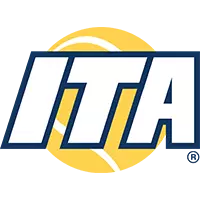University of Massachusets Athletics
Athletic Council Response to the Faculty Senate
Nov. 21, 2001
AMHERST, Mass. - Athletics at the University of Massachusetts is making news, this time from data analyzed by the UMass Office of Financial and Cost Analysis (the Comparison Report), and from the Lazare report, a top-to-bottom evaluation ordered by President Bulger. The day after Aaron Lazare came to Amherst to discuss his work, the Boston Globe ran a story saying that a preliminary look at Lazare's report points to an athletic program that has become a drain. Says the article, while athletics costs UMass close to $12 million, it costs UConn only a third of that, and Nebraska nothing.
The implication of course is that maybe it's time to reevaluate priorities. Indeed, the faculty senate, when discussing this matter, heard from a senator who rose and said "...how should I respond to people who ask me why the University is spending more on athletics than it is on academics." Our advice is to provide a short and truthful answer: hogwash.
A total of 29 teams play intercollegiate athletics at UMass. Collectively these sports ran up a tab of $16.4 million in 1999 that was funded by state support, student fees, and from money generated from ticket sales, marketing and athletic conference and NCAA revenue sharing. It's important to note that unlike many major state universities, UMass has few revenue producing sports, and unlike many private schools UMass lacks large endowments. Taking this into account, the $16.4 million UMass spends on athletics makes it the 7th lowest spender out of the 8 schools identified as peers in the Comparison Report, and 12th out of all 14 schools named in that same report. For example, Penn State and Rutgers offer a similar number of intercollegiate teams with budgets of $30 million and $23 million respectively. UConn offers only 24 sports but at a price tag of almost $25 million. Only the University of California at Santa Barbara and the University of New Hampshire have lower athletic budgets. If one were to instead focus on athletic cost per FTE, a common "equalizer" when it comes to college spending, UMass comes in at $754, 12th out of all 14 schools analyzed. New Hampshire, one of the two schools with a lower athletic budget, has an athletic FTE of $911. And so it appears that UMass is spending less than its identified peers on athletics, not more.
Why then would such questions be asked on campus and why would the Boston Globe appear to be painting the picture of fat athletic budgets at UMass? How can anyone reading the comparative report conclude that UMass spends more on athletics than on academics when academic spending is 17 times greater than athletics? The answer is that the Comparison Report examines spending not through budgets but instead through something called state funding support per FTE. Viewed from this angle, the state supports athletics at UMass to the tune of $521 per FTE, while the same figure across identified peers averages only $170. So, as the story goes, UMass spends more than 3 times its peers on athletics, and by implication seems to be placing too much emphasis on its athletic programs vis-?-vis other programs on campus.
Which is correct? Is UMass spending more or less than its peers? The answer is less. The Comparison Report defines 7 peer institutions, Penn State, Rutgers, UC Santa Barbara, Colorado, Connecticut, Maryland, and Nebraska. In addition, the Comparison Report offers data on Michigan, Florida State, Indiana, New Hampshire, and Tennessee. Many of these schools play big time Division I-A college football, a sport that generates significant revenue. In fact, some of these schools make enough in football to subsidize the entire athletic budget. Nebraska, Michigan, and Indiana report state spending per FTE on athletics of $0, and yet their athletic budgets average over $33 million dollars, twice that of UMass. Nebraska spends more money on one sport - football - than UMass spends on all 29 sports! And so the method used by the Comparison Report, and the resulting quotes in the Boston Globe, shed a strange light on UMass athletics.
The Athletic Council wishes to make one point: the Amherst campus, the University at large, and the Commonwealth are receiving great value from UMass Athletics. By value we speak of what we get (output) versus what we spend (input). Ask any of the coaches of our 29 sports to comment on how our program compares with respect to facilities, to scholarships offered, and to team budgets, and the answer you'll likely receive will be "not very well." But here's the good news. Not only will these coaches not complain, but they'll tell you why you should be proud of what is accomplished despite these inequities. You'll learn that just this past year, athletics at UMass produced 11 Conference championships, 7 NCAA appearances, 6 teams ranked in Top 20, 13 All-Americans Athletes, and 51 All-Conference Athletes. We have won national championships and been to the final four in a number of sports. Less we forget, we won the national championship in football in 1998 and made it to the Final Four in basketball, holding the top rank for most of the season. Although our high profile sports have done well, our sports program overall has been extremely successful, especially our women's sports teams. And that's looking only at success on the field. You'll then feel good about the fact that UMass complies fully with Title IX and we did it not by cutting men's sports but by adding women's sports, that UMass student athletes have consistently graduated at a higher rate than the general student body (65 percent compared to 60 percent), that for six consecutive semesters, over 40 percent of the student-athletes have achieved at least a 3.0 GPA and that 92% of our student athletes graduate who exhaust their eligibility. In fact, this past year, UMass captured the Atlantic-10 Conference Commissioner's Cup that recognizes the top athletic program in terms of both athletic and academic performance for both men's and women's programs.
We on the Athletic Council understand that we write this letter at some risk, that some will interpret our efforts as a defensive mechanism to shield criticism. But if we may offer a sport's analogy - it's not defense we're playing here but offense. Let's not allow an odd reporting mechanism cloud our thinking. And, more importantly, let's not allow the current campus climate to deteriorate into battles between different campus constituencies. Athletics is about building community. Each of our 29 teams are made of players - student athletes - who play in the competitive arena and who become our ambassadors. Their work gives us pride and helps define our University. Finally, most believe that UMass should have a vibrant and competitive program of intercollegiate athletics. Rest assured that UMass is providing just that -- at great value.
Nelson Lacey, Professor, School of Management
Co-Chair, UMass Athletic Council
Rod Warnick, Professor, Hotel, Restaurant and Travel Administration
Co-Chair, UMass Ahtletic Council






